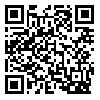Volume 20, Issue 3 (9-2023)
jor 2023, 20(3): 1-17 |
Back to browse issues page
Download citation:
BibTeX | RIS | EndNote | Medlars | ProCite | Reference Manager | RefWorks
Send citation to:



BibTeX | RIS | EndNote | Medlars | ProCite | Reference Manager | RefWorks
Send citation to:
Tahanian Qomi S M, Hamedi M, Tavakkoli Moghaddam R. Developing a Stochastic Bi-Objective Inventory Control Model through Packing Ordering System and a Multi-level Distribution based on Bin Packaging Problem. jor 2023; 20 (3) :1-17
URL: http://jamlu.liau.ac.ir/article-1-1795-en.html
URL: http://jamlu.liau.ac.ir/article-1-1795-en.html
Department of Industrial Engineering, Payam Noor University, Tehran, Iran , maryam.hamedi@gmail.com
Abstract: (1143 Views)
This paper develops a stochastic bi-objective inventory control model, in which the demand with the lead time is a random variable as a normal distribution. It uses a multi-mode distribution, in which each distributer has own selling price and batch size. The retailer should order his/her demand in differnet batch sizes and a minimum order quantity. Bin packing problems have been used for allocation oders to distribution, which belong to a class of well-studied and highly popular combinatorial optimization problems. In general, they are motivated by a large number of real-world applications. Because the presented model is a bi-objective nonlinear programming type and NP-hard one to be solved in a reasonable time, a well-known multi-objective evolutionary algorithm, namely a non-dominated sorting genetic algorithm (NSGA-II), is proposed. To verify the obtained solution and evaluate the performance of the NSGA-II, the ε-constraint method is developed in solving small-sized problems. In large-sized problems, the test problems are solved by the proposed NSGA-II. Then, the Pareto-optimal solutions are evaluated by mean ideal distance, diversitificatiom and time metrics.
Send email to the article author
| Rights and permissions | |
 |
This work is licensed under a Creative Commons Attribution-NonCommercial 4.0 International License. |






